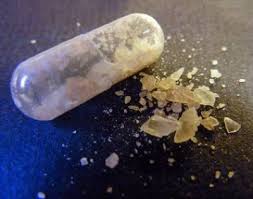Blog
ketamine crystals in bladder

ketamine crystals in bladder, Ketamine, originally developed as an anesthetic, has seen a rise in recreational use over recent years. While it is known for its dissociative effects and potential to induce hallucinations, frequent and prolonged use can lead to severe health consequences. One of the most concerning complications associated with chronic ketamine abuse is the formation and impact of ketamine crystals in the bladder.
What Are Ketamine Crystals?
When ketamine is metabolized by the body, it is excreted primarily through the urine. In chronic users, especially those who use high doses, ketamine and its byproducts can accumulate in the urinary tract. These remnants may crystallize and form microscopic particles, referred to as ketamine crystals. These crystals can irritate the bladder lining, leading to inflammation, pain, and long-term damage.
Ketamine-Induced Cystitis
One of the most well-documented complications associated with ketamine crystals in the bladder is ketamine-induced cystitis. This condition mimics symptoms of a severe urinary tract infection (UTI) and can be incredibly debilitating. Common symptoms include:
-
Frequent and urgent need to urinate
-
Blood in the urine (hematuria)
-
Painful urination (dysuria)
-
Bladder pain and pelvic discomfort
-
Reduced bladder capacity
Over time, the chronic presence of ketamine and its crystalline byproducts can lead to ulceration of the bladder wall, fibrosis, and permanent reduction in bladder volume. In extreme cases, surgical intervention or bladder reconstruction may be required.
Why Does This Happen?
The exact mechanism by which ketamine crystals in the bladder cause damage is still under investigation. However, researchers believe that ketamine metabolites create a toxic environment in the urinary system. The presence of crystals exacerbates this by causing mechanical irritation and inflammation. The repeated trauma to the bladder lining triggers immune responses that result in scarring and long-term dysfunction.
Diagnosis and Treatment
Diagnosing ketamine-related bladder issues involves a combination of patient history, urine tests, imaging studies, and sometimes cystoscopy (a visual examination of the bladder with a scope). The most effective treatment is complete cessation of ketamine use. In early stages, stopping ketamine may allow the bladder to heal over time. Pain management, anti-inflammatory medications, and physical therapy may be recommended for symptom relief.
In advanced cases where bladder capacity is severely compromised, surgical procedures like bladder augmentation or even urinary diversion might be necessary.
Conclusion
The recreational use of ketamine is not without serious consequences. The formation of ketamine crystals in the bladder is a severe and potentially irreversible complication. It underscores the importance of public awareness regarding the risks of chronic ketamine use. For those struggling with ketamine addiction, seeking medical help early can prevent long-term damage and improve quality of life. Awareness, education, and access to treatment are vital in addressing this growing health issue.
